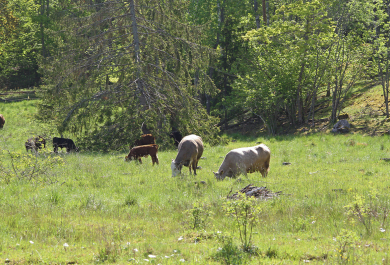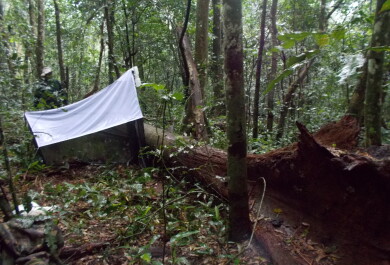A recent analysis of what drives different scientific and societal interest in global species suggests we are missing knowledge on more than half of the world’s biodiversity.
Our understanding of the biodiversity on Earth is unbalanced and biased towards certain species within the Tree of Life, according to a new study. In their analysis, the authors reveal biases that could be diminishing our abilities to care for the species on our planet that might need our attention the most.
Our understanding of the biodiversity within the Tree of Life – all the species that inhabit planet Earth – is an essential foundation in ecology, influencing policy decisions and the allocation of research and conservation funding. While biodiversity is the subject of intense investigation, it seems our attention, from both a scientific and societal standpoint, is unevenly distributed towards some species over others.
“Widespread evidence indicates that biodiversity research has concentrated on certain lineages, habitats and geographic regions over others, and at a species level tends to focus on vertebrates rather than other animals, plants, and fungi,” explains lead author Stefano Mammola, a Researcher in ecology at the Molecular Ecology Group of the Water Research Institute, Italian National Research Council. “However, we lack a comprehensive picture of the features across different populations of organisms that drive human interest in biodiversity.”
To explore the levels of scientific and societal interest in different organisms, the team randomly sampled more than 3,000 species spanning 29 Phyla and Divisions within the Tree of Life. They set out to answer two questions: What are the drivers of scientific interest in different species, and how do these differ from the drivers of societal interest?
Huge disparity between species both in scientific attention and societal attention
To understand the scientific level of interest, they sourced from Web of Science the number of scientific publications focusing on each species, and to determine societal interest they measured the number of views of the Wikipedia page for each species. In addition, they collected species-level traits, such as colour, size and taxonomic uniqueness, alongside cultural factors – such as whether the species is considered useful or harmful.
They found that there was a four-fold difference in the number of scientific papers for some species compared to others. More than half of the species (52%) had no scientific papers associated with them in the sampled database, whereas the most studied species, the maidenhair tree Ginkgo biloba L., appeared in as many as 7,280 scientific papers.
Whereas the scientific publications data was skewed, that is, a small number of species having a large proportion of the publications, the level of societal interest was more spread out across the full 3,000 species studied. However, there was still enormous disparity – with the amount of societal attention ranging from no Wikipedia views for some species to more than 50 million views for others.
Attention is concentrated on species that are considered useful, familiar or beautiful
Next, the team looked at the drivers of scientific and societal interest. They found that the drivers of high scientific and societal interest largely mirrored each other. Those species that were larger in size, had broader geographical distribution, or were taxonomically unique were all of high scientific and societal interest.
Cultural features – such as having a common name in English, being useful or harmful to humans, or being included on the International Union for Conservation of Nature (IUCN) Red List of Threatened Species – also strongly correlated with both scientific and societal interest. By contrast, colourful species, those more closely related to humans, and freshwater dwelling species all received great societal attention, but were not important traits for attracting scientific interest.
Some of the team’s findings confirm previously published work, and some results illustrate circular logic – for example, people tend to assign common names to popular species and/or those that are relevant to humans in some way. However, this study brings all the pieces of the puzzle together for the first time and highlights our uneven knowledge of biodiversity and its potential roots.
“Our results suggest we are concentrating our attention on species that humans generally consider to be useful, beautiful or familiar, and neglecting many species that deserve more research effort and attention – for example due to a higher extinction risk or the key role they play in ecosystems” says senior author Ricardo Correia, Assistant Professor at the Biodiversity Unit of the University of Turku. “Given that the long-term survival of humanity is intertwined with the natural world, preserving biodiversity in all its forms and functions is a central imperative of the 21st century. This can only happen by ensuring a level playing field in the selection of conservation priorities, rather than looking exclusively at the most appealing branches of the Tree of Life.”
The research was supported with funding from the Research Council of Finland and the Kone Foundation.
Photo by Jesse Bauer on Unsplash
Contact details:
Ricardo Correia, University of Turku, raheco@utu.fi, +358406719967
Stefano Mammola, Italian National Research Council, Water Research Institute, Molecular Ecology Group http://www.meg.irsa.cnr.it/




